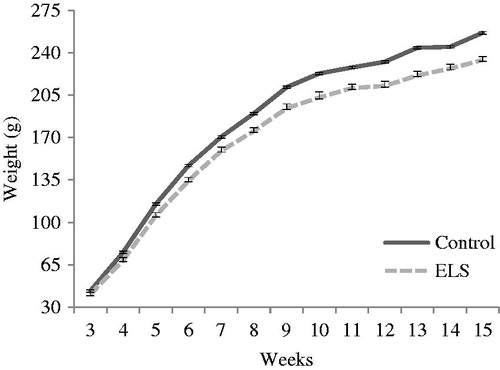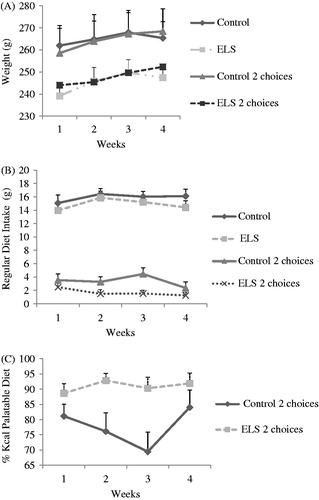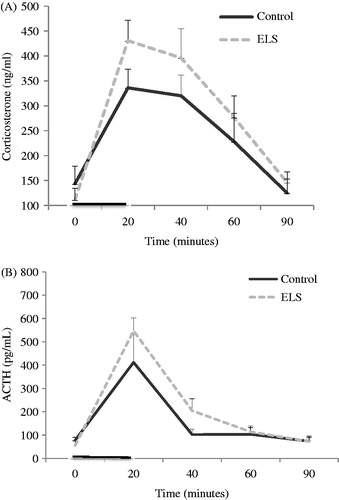Figures & data
Figure 1. Body weight, at 13 weeks of follow-up after weaning, in control (n = 10) and ELS females (n = 20). Data are expressed as mean ± SEM. Repeated measures ANOVA showed an interaction between time and group (p < 0.0001), isolated effects of time (p < 0.0001) and group (p = 0.001).

Table 1. Comparison between the Control and ELS groups related to meal pattern.
Figure 2. (A) Body weight during chronic exposure to the palatable diet. An effect of the neonatal group was detected (p = 0.0017), without interactions. (B) Regular diet intake during chronic exposure to the palatable diet. There was an interaction between dietary group and time (p = 0.008), as well as an effect of the neonatal group (p = 0.026) and the dietary group, as expected (p < 0.0001). Control (regular diet and 2 choices n = 5), ELS (regular diet and 2 choices n = 10). (C) Preference for the palatable diet during chronic exposure. There was an interaction between time and the neonatal group (p = 0.008), as well as isolated effects of the group (p = 0.006) and time (p = 0.016). Control group (n = 5) and ELS group (n = 9). Data are expressed as mean ± SEM.

Table 2. Preference test at BioDaq® system during 24 hours.
Figure 3. HPA response to acute stress. The dark line on the x-axis represents time of exposure to restraint stress. Data are expressed as mean ± SEM. (A) Analysis of corticosterone secretion in control (n = 8) and ELS (n = 8) females revealed an interaction between time and group, indicating that ELS females increased secretion in response to stress (p = 0.02), and an isolated effect of time (p < 0.0001). (B) Analysis of ACTH secretion in the same samples had no group effect (p = 0.467) and no interaction between time and group (p = 0.282), only an isolated effect of time (p < 0.0001).
